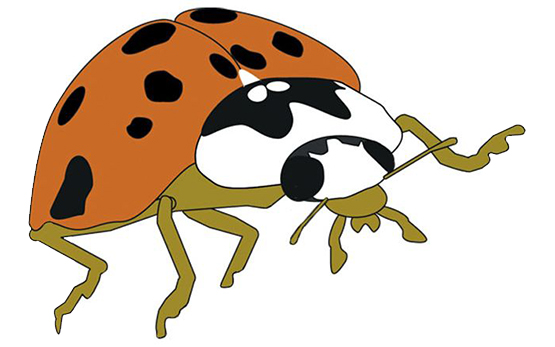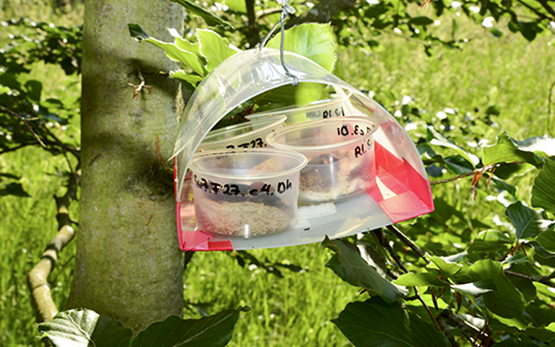Swiss Expert Committee for Biosafety SECB

Many predatory beneficials are able to utilise alternative food sources when prey is limited. If they manage to ensure their development and reproduction in this way, they could gain a competitive advantage over other species. This factor may allow immigrated or introduced exotic species to displace native ones.
Introduced into Europe for pest control, the harlequin ladybird (Harmonia axyridis) has spread rapidly. Today, it is the most common ladybird species in Switzerland, and a strong competitor of both native ladybirds and other beneficials (e.g. lacewings).
We investigate whether different animal and/or plant food sources, such as found e.g. in ecological compensation areas, can give the larvae and adults of the harlequin ladybird a competitive advantage over native species. Here, the harlequin ladybird serves as a model organism for investigating factors that might also play a role in the evaluation of the biosafety of other polyphagous beneficials, such as predatory bugs.
Contact
Financial support
Further Information






